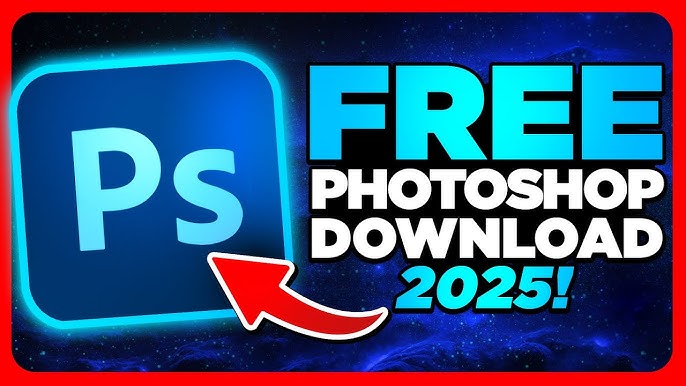How to Download Adobe Photoshop on mobile for free Mod APK

If you've ever looked at a stunning image edit or a jaw-dropping social media post and wondered, "How do they do that?" — chances are, Adobe Photoshop is behind it.
Photoshop is the gold standard for photo editing and digital design, used by professionals and hobbyists alike. Whether you're a beginner wanting to edit a selfie or a content creator aiming to design eye-catching graphics, learning how to use Photoshop can unlock a whole new world of creative possibilities.
In this comprehensive guide, we'll explore what Photoshop is, how to use it step-by-step, and cover essential tools and techniques that every beginner must know.
🎨 What is Adobe Photoshop?
Adobe Photoshop is a powerful image editing software developed by Adobe Inc. It's widely used for:
- ✅ Photo editing and retouching
- ✅ Digital painting and illustration
- ✅ Graphic design
- ✅ Web and UI/UX design
- ✅ Creating digital art, posters, banners, and more
Photoshop works using layers, tools, filters, and adjustments to manipulate images. Whether you're editing a simple photo or creating complex digital artwork, Photoshop provides the flexibility and control you need.
🚀 Getting Started with Photoshop

1. Installing Photoshop
To begin, download and install Photoshop from Adobe's official website. It's available through a Creative Cloud subscription, and you can get a 7-day free trial if you're just getting started.
2. Launching Photoshop for the First Time
Once installed:
- Open the app.
- Choose "New File" to create a blank canvas or "Open" to edit an existing image.
- Familiarize yourself with the interface:
- Tools Panel (Left side): Contains essential tools like Brush, Eraser, Crop, etc.
- Options Bar (Top): Changes based on the tool you select.
- Layers Panel (Right side): Manages the layers in your project.
🖥️ Understanding the Photoshop Workspace
Here are the key areas you'll interact with:
- Canvas: The area where your image is displayed.
- Menu Bar: Contains File, Edit, Image, Layer, Select, Filter, View, and more.
- Toolbar: Basic tools for editing and design.
- Panels: Includes Layers, Color, Properties, Adjustments, etc.
You can customize your workspace from Window > Workspace and save your favorite layout.
🛠️ Essential Photoshop Tools (and How to Use Them)
Let's go over some of the most commonly used tools:
1. Move Tool (V)
- Use this to move elements (text, images, layers) around the canvas.
2. Crop Tool (C)
- Trim your image or canvas to the size you want.
3. Brush Tool (B)
- Paint with a variety of brush sizes, shapes, and textures. Great for digital art or touch-ups.
4. Eraser Tool (E)
- Erases parts of a layer. Think of it like a digital rubber.
5. Magic Wand Tool (W)
- Select areas of similar color with one click — useful for removing backgrounds.
6. Lasso Tool (L)
- Freehand select parts of the image.
7. Text Tool (T)
- Add text layers. You can adjust font, size, alignment, and effects.
8. Zoom Tool (Z)
- Zoom in and out to focus on fine details.
📚 Working with Layers
Layers are like sheets stacked on top of each other. Each layer can contain text, images, or effects.
Why layers matter:
- They keep your edits non-destructive.
- You can apply different effects to each layer.
- You can hide, lock, or blend layers.
To add a new layer:
Go to Layer > New > Layer or click the "+" icon in the Layers panel.
🔧 Basic Photoshop Tasks (Step-by-Step)
1. How to Resize an Image
- Go to Image > Image Size
- Adjust the width and height (choose pixels or inches)
- Make sure "Constrain Proportions" is checked
2. How to Remove a Background
- Select the object using the Quick Selection Tool (W)
- Click Select Subject
- Then go to Select > Inverse and press Delete
- Or, use Layer Mask to non-destructively hide the background
3. How to Add Text
- Select the Text Tool (T)
- Click on the canvas and type
- Adjust font, size, and color from the Options bar
4. How to Apply Filters
- Go to Filter > Filter Gallery
- Choose from artistic effects like Blur, Sharpen, Stylize, etc.
5. How to Save a Project
- To save in editable format: File > Save As > PSD
- To save for web or social media: File > Export > Save for Web (JPEG/PNG)
Pro Tip: Keyboard Shortcuts
Speed up your workflow with these essential shortcuts:
- Ctrl+Z: Undo
- Ctrl+T: Transform
- B: Brush
- E: Eraser
- Ctrl+J: Duplicate layer
💡 Top Photoshop Tips for Beginners
- Use Keyboard Shortcuts - They dramatically speed up your workflow.
- Zoom in/out frequently - Work on details closely using Ctrl + / -.
- Learn Layer Masks early - It's better than erasing — you can hide parts of a layer non-destructively.
- Name your layers - Helps you stay organized when working on large projects.
- Use Adjustment Layers - Go to Layer > New Adjustment Layer to adjust brightness, contrast, hue, saturation without affecting the original image.
🎨 Common Photoshop Projects (Ideas You Can Try)
- Create a social media post banner
- Design a business card or logo
- Retouch a selfie (remove pimples, whiten teeth, enhance eyes)
- Remove people or objects from photos
- Make a digital collage or mood board
- Create a thumbnail for YouTube or Instagram
- Edit product photos for e-commerce
🆚 Photoshop vs Other Tools
You might ask: "Why not use Canva or Figma?"
- Photoshop is perfect for pixel-perfect editing, retouching, and professional design.
- Canva is good for quick templates and social media graphics.
- Figma is used mainly for UI/UX design.
If you want creative control, Photoshop remains unmatched.
📖 Learning Photoshop Faster (Resources to Help You)
YouTube Channels:
- Photoshop Training Channel
- Piximperfect
- Phlearn
Online Courses:
- Adobe's official tutorials
- Udemy Photoshop Masterclass
- Skillshare design classes
Practice Projects:
- Redesign an ad or poster
- Recreate famous artwork
- Edit personal photos for fun
💭 Final Thoughts
Photoshop can seem overwhelming at first — with its hundreds of tools and settings — but the key is to start simple and practice consistently. Don't try to master everything in one day. Focus on basic edits, understand how layers work, and gradually learn more advanced tools.
Once you get comfortable, you'll be amazed at what you can create: stunning visuals, creative photo manipulations, and designs that truly stand out.
Whether you're an aspiring designer, photographer, or entrepreneur looking to enhance your brand, learning Photoshop is one of the best investments you can make.


